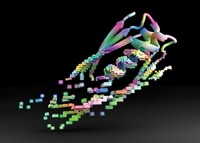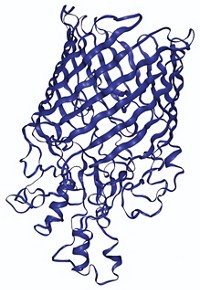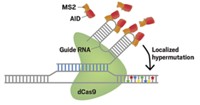Advertisement
Grab your lab coat. Let's get started
Welcome!
Welcome!
Create an account below to get 6 C&EN articles per month, receive newsletters and more - all free.
It seems this is your first time logging in online. Please enter the following information to continue.
As an ACS member you automatically get access to this site. All we need is few more details to create your reading experience.
Not you? Sign in with a different account.
Not you? Sign in with a different account.
ERROR 1
ERROR 1
ERROR 2
ERROR 2
ERROR 2
ERROR 2
ERROR 2
Password and Confirm password must match.
If you have an ACS member number, please enter it here so we can link this account to your membership. (optional)
ERROR 2
ACS values your privacy. By submitting your information, you are gaining access to C&EN and subscribing to our weekly newsletter. We use the information you provide to make your reading experience better, and we will never sell your data to third party members.
Biological Chemistry
Studying Protein Structure Can Be A Musical Experience
by Linda Wang
July 23, 2007
| A version of this story appeared in
Volume 85, Issue 30

Many researchers use software such as RasMol to visualize three-dimensional structures of proteins. But what if a researcher is blind? What's the best way to navigate those same proteins?
Timothy Cordes, a blind medical scientist at the University of Wisconsin, Madison, faces this challenge every day in his X-ray crystallography research. In the past, he had to go through several steps to figure out the spatial relationships of atoms and amino acid residues in a protein. "For everything I wanted to look at, I'd have to go into one program and write a file and then read it in another," he says. "I realized I needed a tool to help me streamline the process."
So Cordes developed software that allows him to navigate a protein structure simply by listening through headphones for musical cues; different atoms are represented by different musical instruments. For example, if Cordes moves his cursor to a carbon atom, he might hear the sound of a piano. If he's at an oxygen atom, he might hear the sound of a flute. As he moves from one atom to another above it, the pitch increases. And if he shifts the cursor from left to right, he'll hear the sound move from his left ear to his right ear. "It's pretty intuitive," Cordes says.
Online Information For The Blind Or Visually Impaired
- Independent Laboratory Access for the Blind
[http://ilab.psu.edu]
A source of information on laboratory tools and techniques being developed for blind students by Pennsylvania State University, Truman State University, and the Indiana School for the Blind & Visually Impaired - National Center for Blind Youth in Science
www.blindscience.org
A clearinghouse of science, technology, engineering, and math resources for blind youth and their parents and teachers - National Federation of the Blind
www.nfb.org
An organization of blind people working to improve the lives of blind people through advocacy, education, research, technology, and programs encouraging independence and self-confidence - American Foundation for the Blind
www.afb.org
A nonprofit organization that supports the development of tools and technology for the blind and that promotes independent and healthy living for people with vision loss - TAEVIS at Purdue University
www.taevisonline.purdue.edu
A service that provides academic tools for students who are blind, are visually impaired, or have other vision-related disabilities - gh LLC
www.ghbraille.com
An assistive technology company that helps people with visual disabilities access information, whether the source is a textbook, publication, standardized test, or website - ACS Committee on Chemists with Disabilities
membership.acs.org/c/cwd
A committee of the American Chemical Society that promotes educational and professional opportunities for individuals with disabilities who are interested in pursuing careers in chemistry and in fields requiring knowledge of chemistry
He says the program can also help sighted researchers by adding another dimension to their understanding of protein structures. Cordes plans to publish a paper about his program later this year and will make the software available for free on the Internet. He says the open-source code will allow others to modify the program according to their own needs. "I'm using this tool for proteins, but three-dimensional data is all around us, and this approach could just as easily be applied to geology or architecture."
In related work published in May in Genome Biology, Rie Takahashi and Jeffrey H. Miller of the University of California, Los Angeles, converted amino acid sequences in proteins into musical notes with the goal of enabling visually impaired scientists to hear protein patterns (2007, 8, 405). Examples of their work can be found at www.mimg.ucla.edu/faculty/miller_jh/gene2music/home.html.
"By converting genomic sequences into music, we hope to achieve several goals, which include investigating sequences by the vision impaired," the authors write. "Another aim is to attract young people into molecular genetics by using the multidisciplinary approach of fusing music and science."
- Seeing the Possibilities
- Blind chemistry students get a taste of independence in the lab
- Overcoming Disabilities
- Legally Blind And Deaf, Graduate Student Nears Completion Of His Ph.D.
- Awareness
- Teaching The Blind And Visually Impaired Is Not A One-Size-Fits-All Endeavor
- » Research Tools
- Studying Protein Structure Can Be A Musical Experience
- Web Resources
- Online Information For The Blind Or Visually Impaired
- Video: Hoping to Make the Cut
- In April, Hopewell Valley Central High School junior Trevor Saunders became the first blind student to qualify for participation in the International Chemistry Olympiad. Watch Saunders complete the lab portion of the exam.
- Photo Gallery: A Day With Blind Students Cary Supalo And Trevor Saunders
- On May 22, C&EN reporter Linda Wang and blind Pennsylvania State University graduate student Cary Supalo (shown) visited Hopewell Valley Central High School, in Pennington, N.J., to document the progress of blind junior Trevor Saunders in using several new assistive tools for the chemistry lab. Here is a selection of the photographs Wang took.





Join the conversation
Contact the reporter
Submit a Letter to the Editor for publication
Engage with us on Twitter